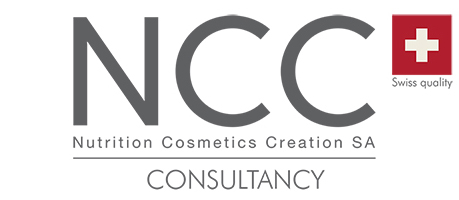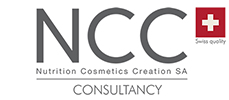Before placing a food supplement product on the market, it is crucial to ensure its efficacy and safety. Thus, testing plays a vital role in assessing the quality and reliability of a product, protecting consumers from potential health risks, and complying with regulatory requirements. This article will discuss the essential steps involved in testing the efficacy and safety of a food supplement product before it reaches the market.
Provide a testing plan
The first step in testing the efficacy and safety of a food supplement product is to create a comprehensive testing plan. This plan should outline the objectives, methodology, and specific tests to be conducted. Furtherlore, it should consider factors such as the target population, intended use, and potential risks associated with its ingredients.
Conduct Preclinical Studies
Preclinical studies are conducted before human trials to evaluate the safety and effectiveness of a food supplement product. Basically, these studies provide valuable insights into the compound’s behavior in living organisms and help determine an appropriate dosage range.
Perform Clinical Trials
Clinical trials involve human subjects and are critical in determining the efficacy and safety of a food supplement formula. These trials typically consist of three phases. First phase focuses on determining the supplement’s dosage and assessing its safety profile in a small group of healthy volunteers. Then, second phase expands the study to a larger population to assess the supplement’s efficacy and side effects. At the end, third phase involves a larger-scale study to further evaluate the supplement’s effectiveness, monitor long-term safety, and compare it to existing treatments.



.
.
.

Ensure Regulatory Compliance
Compliance with regulatory standards is essential to ensure the safety and quality of a food supplement product. Depending on the jurisdiction, regulatory bodies may require specific tests, documentation, and labeling requirements. Regardless, it is crucial to adhere to these regulations to meet legal obligations and gain consumer trust.
Implement Quality Control Measures
A robust quality control throughout the manufacturing process is crucial in ensuring safety and efficacy of a food supplement. This involves verifying the identity, purity, and potency of raw materials, conducting in-process testing, and performing final product analysis. Specifically, quality control procedures help identify and prevent any potential contaminants or deviations from specifications.
Monitor Adverse Events
Monitoring adverse events is an ongoing process to identify and assess any undesirable effects. Indeed, collecting and analyzing data on adverse events allows manufacturers to take appropriate measures to ensure consumer safety. This information is also valuable in continuously improving the product’s formulation and identifying any potential risks.
How to determine the quality of a supplement?
This step involves assessing various factors related to its ingredients, manufacturing process, labeling, and regulatory compliance. Here are some key aspects to consider when evaluating the quality of a supplement:
Good Manufacturing Practices (GMP)
Check if the supplement is manufactured in a facility that follows GMP guidelines. Especially, GMP ensures that the product is produced under strict quality standards, including ingredient sourcing, manufacturing processes, cleanliness, and record-keeping.
Ingredient Quality
It’s mandatory to:
– evaluate the sources and quality of the supplement’s ingredients.
– look for supplements that use high-quality, standardized ingredients from reputable suppliers.
– assess if the ingredients are pure, free from contaminants, and meet the required potency levels.
.
.

.
.


.

Certificate of Analysis (CoA)
The CoA provides detailed information about the supplement’s composition, including the presence of active ingredients, potential contaminants, and adherence to quality standards. Request a CoA from the manufacturer or supplier & Verify if the CoA is from an accredited laboratory.
Label Accuracy
It should clearly list all active and inactive ingredients, including their respective amounts or concentrations. Ensure that the label matches the information provided in the CoA.
Allergen Information
Check if the supplement contains any common allergens such as gluten, dairy, soy, or nuts. Clear allergen labeling is essential for individuals with specific dietary restrictions or allergies.
Manufacturing Date and Expiration Date
Look for the manufacturing and expiration dates on the packaging. Ensure that the supplement is within its shelf life and has not expired, as expired products may lose potency or become unsafe to consume.
Third-Party Testing
Determine if the supplement undergoes third-party testing by independent laboratories. Third-party testing provides an additional layer of quality assurance and verifies the accuracy of the product’s claims.
Adverse Event Monitoring
Research if there have been any reported adverse events associated with the supplement. Check with regulatory bodies or consumer advocacy groups for any warnings, recalls, or safety concerns related to the product.
Reputation and Reviews
Consider the reputation and reviews of the supplement manufacturer. Look for established companies with a history of producing high-quality products and positive customer feedback.




What should you look for on a supplement label to ensure quality?
To ensure the quality of a supplement, it is important to carefully examine the label for specific information. Here are key elements to look for on a supplement label:
Supplement Facts
This section provides detailed information about the serving size, the number of servings per container, and the amount of each active ingredient present in each serving.
Ingredients List
The label should clearly list all the ingredients present in the supplement, including active and inactive ingredients. The ingredients should be listed in descending order by weight, with the highest quantity first.
Allergen Information
Check for any allergen warnings or statements on the label, indicating the presence of common allergens such as gluten, dairy, soy, or nuts. This information is crucial for individuals with specific dietary restrictions or allergies.
Daily Value (DV)
Some supplements may include the Daily Value (DV) percentage for certain nutrients. The DV indicates the recommended daily intake of a nutrient based on a 2,000-calorie diet. It helps consumers understand the relative amount of a nutrient present in the supplement.

CONCLUSION: HOW TO TEST THE EFFICACY AND SAFETY OF A FOOD SUPPLEMENT PRODUCT ?
Testing a food supplement efficacy and safety is a crucial step to ensure consumer safety and regulatory compliance. From formulating a comprehensive testing plan to conducting preclinical studies and clinical trials, each step is crucial. As a result, these steps contribute to understand the product’s effectiveness and potential risks. Adhering to regulatory requirements and implementing quality control measures throughout the manufacturing process further enhances consumer trust. By following these steps, manufacturers can confidently place their food supplement on the market, providing a safe and effective option for consumers.
Nataly Komova, fitness and nutritionist expert
Human Nutrition & Health, BSc Hons
Website: https://justcbdstore.com/nataly-komova-2/
To read too:
- White label, a solution?
- Probiotics: What is this new trend consisting of bacteria for In & Out use?
- Cosmetic Packaging: Airless, bio-sourced & refillable for greener products
- Cosmetics: towards green formulation
- Powdered cosmetics, a trend to follow?
- Regulation and development of cosmetic ranges or well-being products
- https://www.instagram.com/mesactifsprecieuxbyncc/
Do you want to develop new products? Discover our free In&Out product catalogue!



